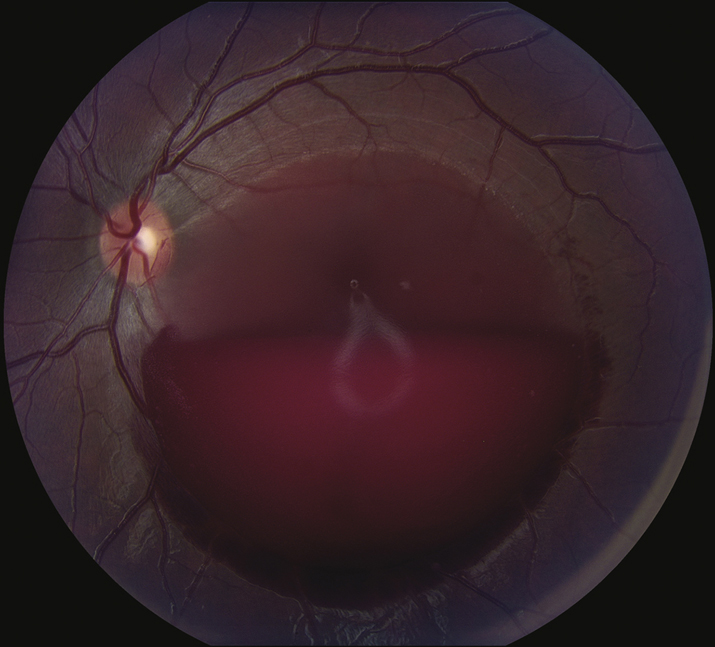Decreased vision or asymptomatic. History of Valsalva maneuver (forceful exhalation against a closed glottis), which may occur during heavy lifting, coughing, vomiting, or straining during bowel movement. Sometimes, no history of Valsalva can be elicited.
(See Figure 11.21.1.)
Critical
Single or multiple hemorrhages under the ILM in the area of the macula. Can be unilateral or bilateral. Blood may turn yellow after a few days.
Other
Vitreous, intraretinal, subretinal, and subconjunctival hemorrhage can occur.
11-21.1 Valsalva retinopathy.

Valsalva causes sudden increase in intraocular venous pressure leading to rupture of superficial capillaries in macula or elsewhere in the retina. May be associated with anticoagulant therapy.
Prognosis is excellent. Most patients are observed, as sub-ILM hemorrhage usually resolves after a few days to weeks. Occasionally laser is used to permit the blood to drain into the vitreous cavity, thereby uncovering the macula. Vitrectomy rarely considered, typically only for nonclearing VH.
May follow up every 2 weeks for the initial visits to monitor for resolution, then follow up routinely.
